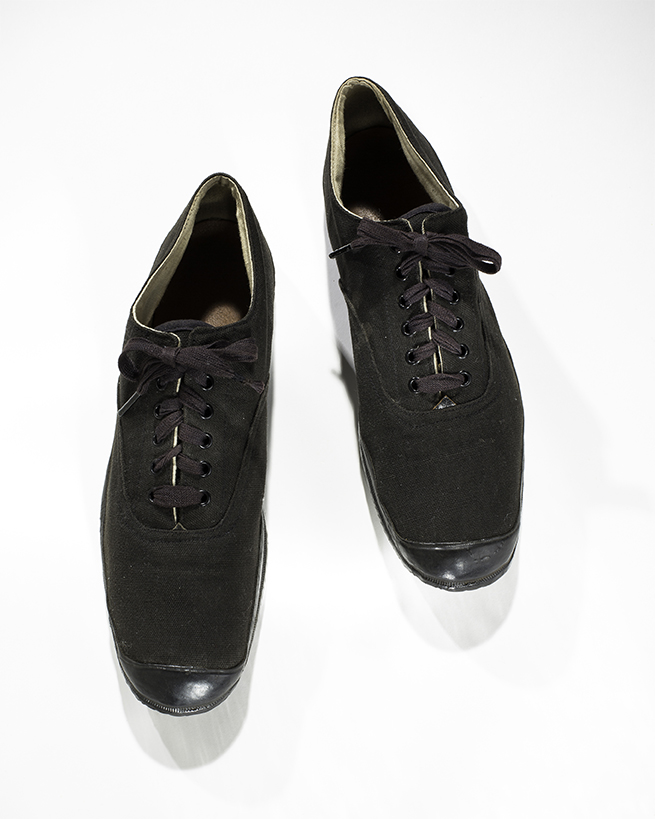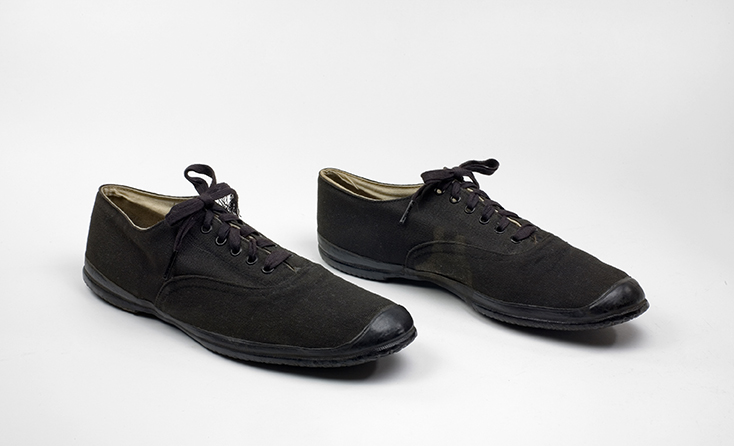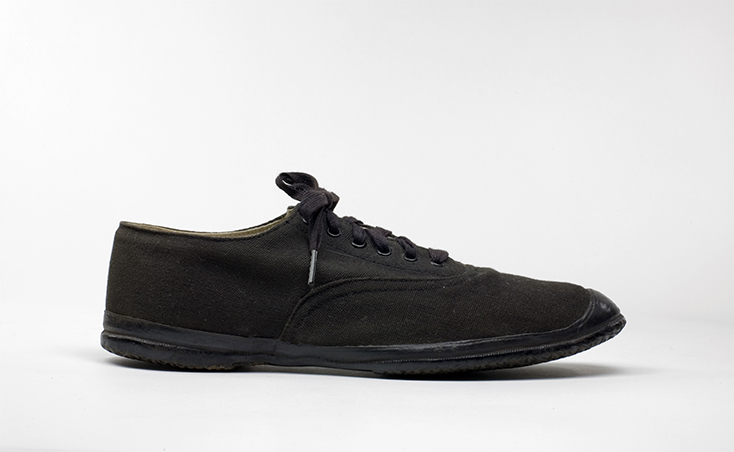Take a peek into our nearly 15,000 collection with our blog series, From the Vault! Every other week, we share interesting stories about one of our artefacts.
What is the provenance of this pair? When did they enter the BSM collection?
These low-cut, lace-up sneakers would have been worn for a variety of athletic and leisurely pursuits at the end of the 19th century and was purchased for the museum in 1996.
Are there any features that distinguish this artefact from others of the same period and geographical location?
They were made by the Goodyear Rubber Manufacturing Company which was founded in the middle of the century. Although these are simple canvas shoes, they demonstrate a subtle elegance. The attention to detail, which can be seen in touches such as the addition of small decorative leather tabs below the lacing, reflect the fact that the intended clientele was relatively privileged.
Can you elaborate more on this artefact?
Early sneakers were made of canvas with rubber soles that began as costly luxuries with social implications despite their humble appearance. The 19th century was a period of booming industrialization which gave rise to an upwardly mobile middle class and leisure time, long a privilege of the rich, was eagerly pursued as a means of proclaiming newfound status. This, in turn, led to a demand for specialized equipment and clothing designed specifically for these amusements. Enterprising manufacturers began to offer rubber-soled athletic shoes at prices reflecting not only the high cost of rubber but also the financial success of their intended clientele.
In the United States, this increasingly ubiquitous form of footwear came to be called the ‘sneaker’, in addition to being called a ‘tennis shoe’ by the 1870s. The term ‘sneak’ was used as early as 1862 in England to refer to rubber galoshes and the fact that rubber soles let one pad around noiselessly. However, it was only in the US that the term sneaker became commonplace to identify rubber-soled athletic footwear by the 1870s.






